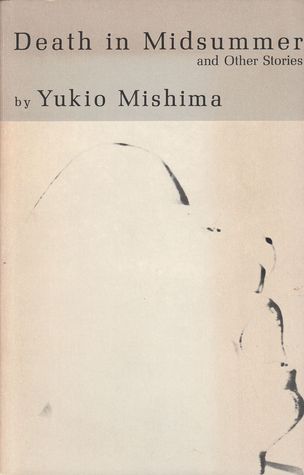
Sometimes, when I read, it feels as if the words were always already written inside me and the author has simply drawn them to my attention. That happens most often to me with poetry and large novels, rarely with short stories. But with short stories, there are a few notable exceptions—Hawthorne’s Rappaccini’s Daughter, Poe’s Telltale Heart, Salinger’s For Esme With Love and Squalor, O’Connor’s Parker’s Back, and a haunting story by Yukio Mishima, Death in Midsummer. Since the tsunami which struck the east coast of Japan near Sendai on March 11th, I have revisited Mishima and what now seems a prescient story.
Published in 1966, Death in Midsummer is the story of Tomoko, holidaying by the coast with her three young children and Yasue, her sister-in-law, a single older woman. It is set on Izu Peninsula which, although south from Sendai, is also on the east coast of Japan. While Tomoko dozes in her hotel room, Yasue watches the children at play on the beach. Because the children split up, Yasue’s attentions are divided and she fails to notice until it’s too late that the two older children have been caught in the surf. She runs toward them but collapses of a heart attack when a wave strikes her full in the chest. Onlookers rush to her side, and in the commotion to give her first aid, no one realizes that there are two children missing. When Tomoko arrives, she assumes that all her children are in the care of a fisherman. Hours pass before she realizes that the man is looking after only one of the children.
Most of the story is devoted, not to the tragic event itself, but to the psychology of grief which follows. We witness how Tomoko and her husband, Masaru, move through anger and self-blame, attend to rituals with feelings of emptiness, confront their guilt at moments of forgetfulness, and eventually work to reconciliation with events and a sense of renewal. Although the story begins with a stark presentation of the deaths, and uses a spare prose that gives the loss a harsh edge, nevertheless, Death in Midsummer is a hopeful story. We don’t ever find sentimentality in Mishima’s writing, but here, we do get a clear-eyed acknowledgment that healing is possible and that people can rebuild their lives.
What is uncanny about the story is its attention to a question about scale of loss. In the events of three weeks ago, more than 12,000 people died and another 15,000 are still missing. These numbers are impossible to comprehend, no less the 230,000 who died from the tsunami of December 2004. Tomoko approaches this impossibility:
[S]he was actually in despair at the poverty of human emotions. Was it not irrational that there was nothing to do except weep when ten people died, just as one wept for but a single person?
And later, once they have buried their family’s ashes in the cemetery:
How, she wondered, could facts be so completely improbable? For one child to drown in the ocean—that could happen, and no doubt anyone would accept it as a fact. But for three people to drown; that was ridiculous. And yet ten thousand was different again. There was something ridiculous about the excessive, and yet there was nothing ridiculous about a great natural catastrophe, or war.
Two summers later and with a baby, Tomoko insists that their new family return to the hotel where they lost Yasue and their two oldest children. They go down to the beach, holding hands:
From beneath the clouds, the sea came toward them, far wider and more changeless than the land. The land never seems to take the sea, even its inlets. Particularly along a wide bow of coast, the sea sweeps in from everywhere.
